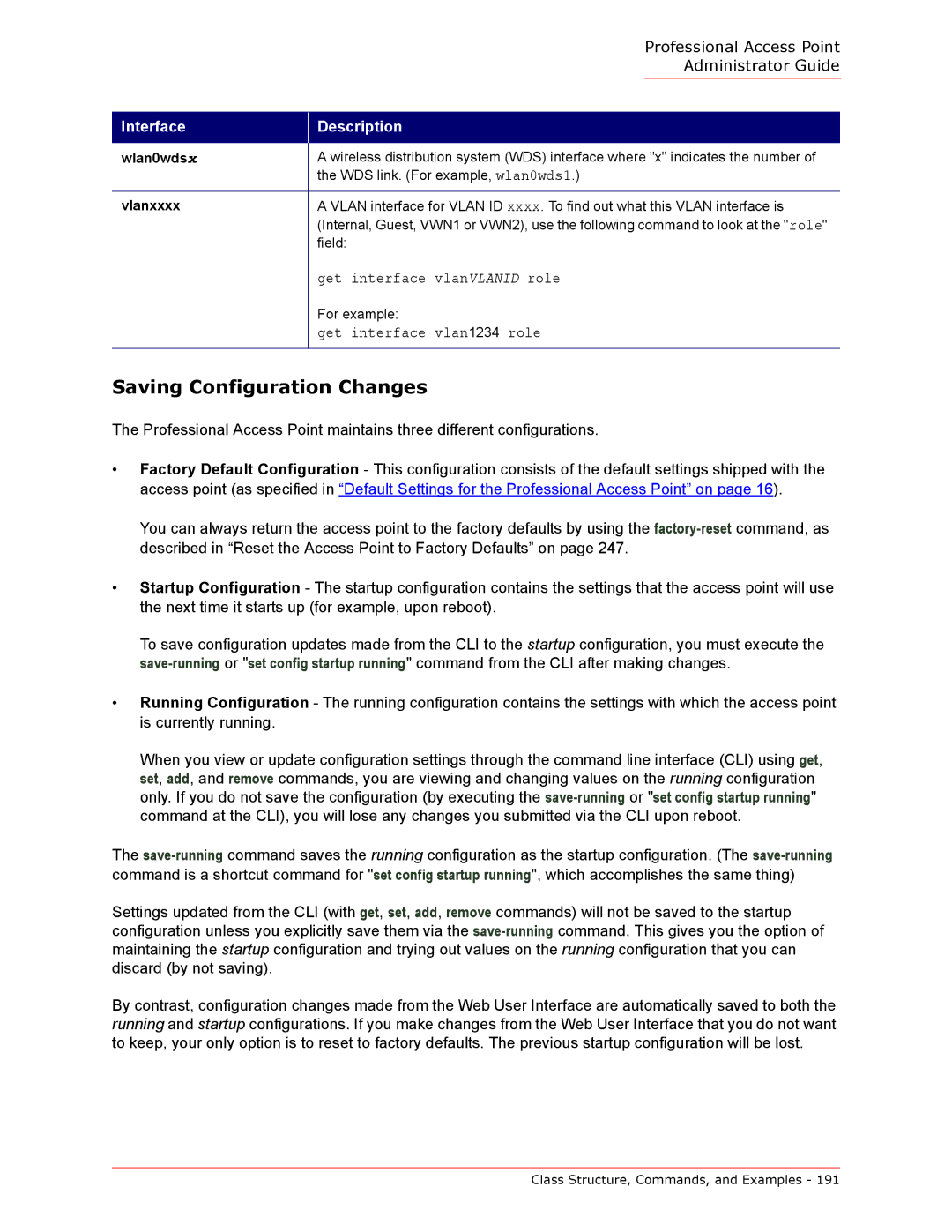
Professional Access Point Administrator Guide
Interface
Description
wlan0wdsx | A wireless distribution system (WDS) interface where "x" indicates the number of |
| the WDS link. (For example, wlan0wds1.) |
vlanxxxx | A VLAN interface for VLAN ID xxxx. To find out what this VLAN interface is |
| (Internal, Guest, VWN1 or VWN2), use the following command to look at the "role" |
| field: |
| get interface vlanVLANID role |
| For example: |
| get interface vlan1234 role |
Saving Configuration Changes
The Professional Access Point maintains three different configurations.
•Factory Default Configuration - This configuration consists of the default settings shipped with the access point (as specified in “Default Settings for the Professional Access Point” on page 16).
You can always return the access point to the factory defaults by using the
•Startup Configuration - The startup configuration contains the settings that the access point will use the next time it starts up (for example, upon reboot).
To save configuration updates made from the CLI to the startup configuration, you must execute the
•Running Configuration - The running configuration contains the settings with which the access point is currently running.
When you view or update configuration settings through the command line interface (CLI) using get, set, add, and remove commands, you are viewing and changing values on the running configuration only. If you do not save the configuration (by executing the
The
Settings updated from the CLI (with get, set, add, remove commands) will not be saved to the startup configuration unless you explicitly save them via the
By contrast, configuration changes made from the Web User Interface are automatically saved to both the running and startup configurations. If you make changes from the Web User Interface that you do not want to keep, your only option is to reset to factory defaults. The previous startup configuration will be lost.
Class Structure, Commands, and Examples - 191
